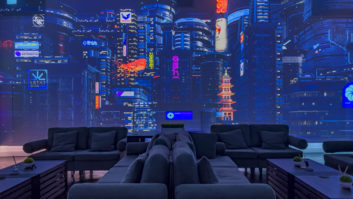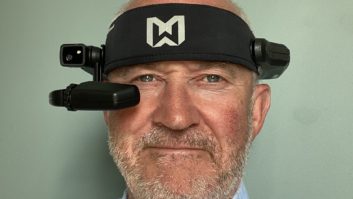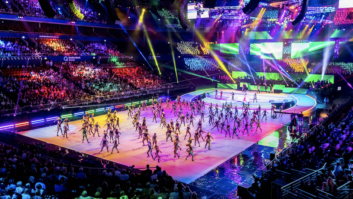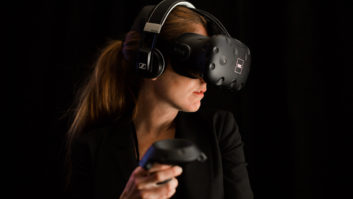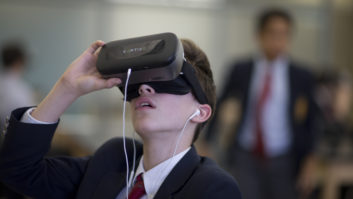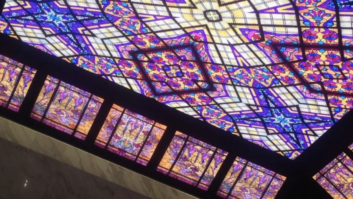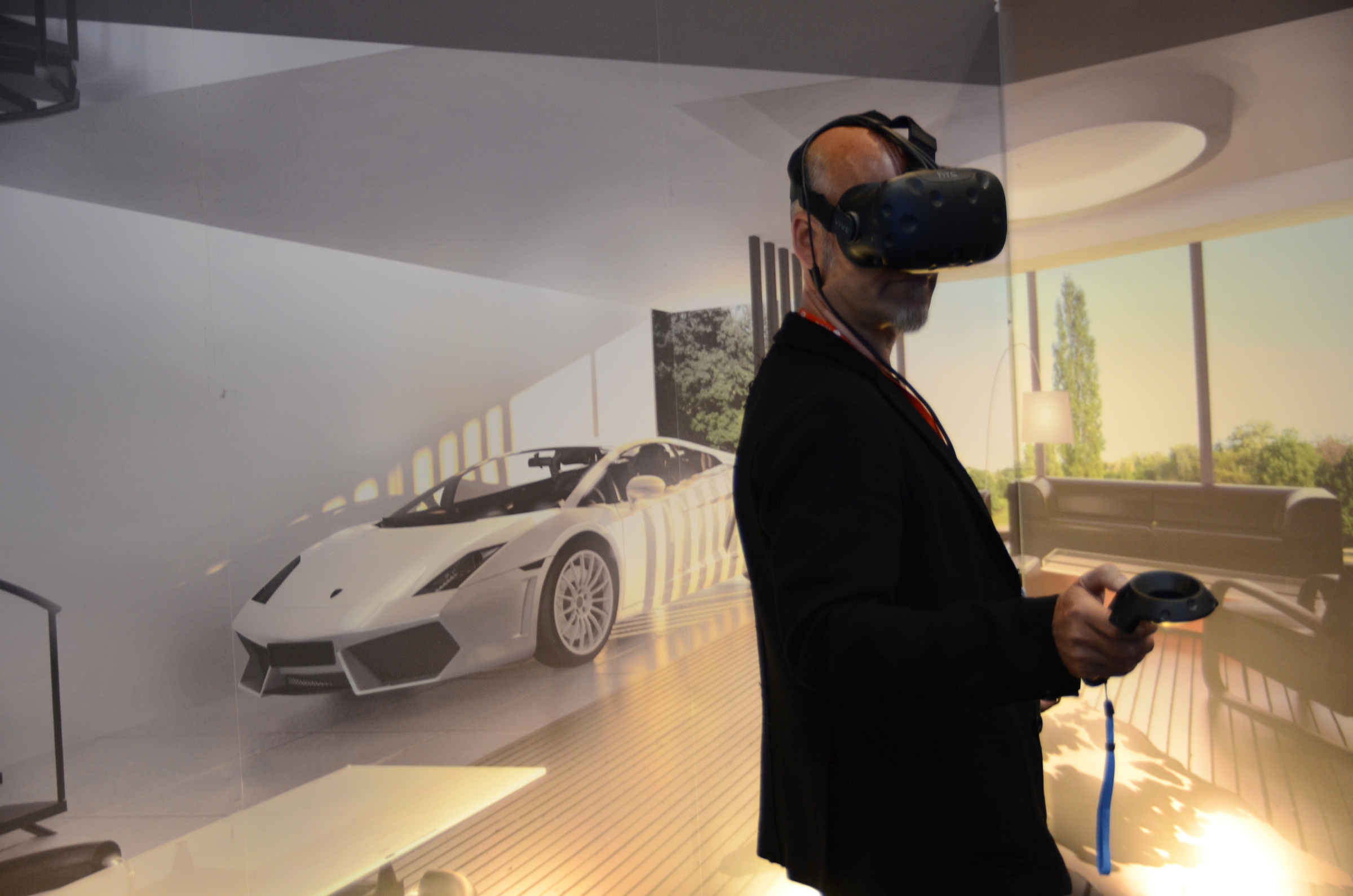
The lines between the real world and the virtual world are blurring rapidly, such that making a distinction between the two is becoming increasingly challenging. Ian McMurray assesses the implications for the AV industry.
If you’ve been asleep for the past couple of years, you probably missed the Pokémon Go craze. Launched in July 2016, it generated 752 million downloads and $1.2 billion in revenues. Somewhat brief-lived – is anyone even still playing it? – it could be said to have brought augmented reality (AR) to the mass market.
In a similar vein, virtual reality (VR) has, until now, been largely a consumer market. In fact, for ‘consumer’ read ‘ gamer’. Sony has launched the PlayStation VR, while PC gamers have the HTC Vive. Google has its own offering, and evidence of the perceived potential of the VR market can perhaps be found in Facebook’s acquisition of Oculus VR for a reported $2 billion in March 2014.
Of the two, it seems likely that AR will emerge the clear winner. Researcher Digi-Capital, for example, believes that the VR/AR market will be worth $108 billion by 2021, with AR taking the lion’s share of that at $83 billion. IDC is even more bullish, forecasting a combined market value of $143.3 billion by 2020. The company notes that the large majority of this will be driven by consumer applications, but believes that the forerunners in commercial applications will be retail, transportation and healthcare.
Oh, and: just to confuse the issue, Microsoft now provides Windows Mixed Reality, having dabbled its toes in the AR waters with Hololens. From what anyone can ascertain, mixed reality (MR) falls somewhere between VR and AR.
Shared experiences
It’s almost certainly significant that this year saw the debut of the new XR Technology Zone at ISE, showcasing the latest in virtual technologies, and the XR Summit ISE B2B strategy conference. What, then, will VR/AR/MR mean to the pro AV community?
“Almost by definition, the AV industry is about delivering shared or collective experiences,” says Colin Yellowley, founder and president, Igloo Vision, which specialises in the creation of immersive technology. “But, up until now, VR/AR/MR has mainly been about individual experiences, so the big challenge – and opportunity – for AV professionals is to turn VR into a shared experience.
“This is particularly the case in the enterprise market,” he continues. “Unless the content is sharable, its value is limited. For almost all commercial VR applications, teams of people need to be able to experience the same thing in the same way.”
“There’s huge scope for AV professionals to transform conference rooms, training rooms, collaboration rooms and visitor attractions into immersive spaces,” he concludes. “The opportunities, as I see it, are endless.”
Andrew Hug, vice president, systems engineers, EMEA at Polycom, picks up on the theme of collaboration, and is clear.
“Advances in VR/AR/MR are making their way into all sorts of areas of our lives, and this will inevitably enter our working lives,” he believes. “AR will definitely play a role in videoconferencing and collaboration going forward as technology evolves; for example, the latest developments in content collaboration already provide for a far more immersive experience.”
The big challenge – and opportunity – for AV professionals is to turn VR into a shared experience
Colin Yellowley, Igloo Vision
Most potential
“We believe that collaborative solutions have the most potential in the VR/AR/MR market, simply because it offers the most diverse use case across a range of industry types,” agrees Matthew Bumford, who is head of sales and marketing at mixed reality development studio Kazendi. “From architecture to education, construction to crisis management the ability to use these technologies to engage with colleagues remotely in an expedited and seamless manner will change the scope of work across the board.”
Among the shared spaces Yellowley referred to were visitor attractions – a subject on which Ross Magri, managing director of Sarner, is an expert.
“VR/AR/MR are slowly making inroads into all areas of leisure entertainment, corporate, museums and educational fields,” he notes, “but this is still a niche market requiring specialist skills to deliver the media and hardware necessary for such projects.”
As well as visitor attractions, simulation and design also come to mind for Jorma Palo, COO at visual sales solutions company VividWorks.
“The key point of these new technologies is to allow visualisation of a virtual item in a real or simulated environment,” he says. “Simulation and visitor attractions will benefit highly. In design applications, lifelike realism brings the opportunity to instantly understand the presented item in the actual target environment. Eliminating the need to build or ship products early in the development cycle can have significant benefit in terms of cost and time-to-market.”
Market opportunities
Palo has an ally in Anne Lindgren, sales director of interactive glass manufacturer Seloy Live.
“I see training rooms and simulation as major market opportunities,” she says. “Using these technologies enables new products to be developed more quickly at a time when product lifecycles are decreasing. Different options can be rapidly evaluated, reducing development costs and manufacturing lead times. There’s also the green element: being able to be trained virtually instead of needing to relocate physically is an environmentally better way of doing things.”
Dave Elliott, who is responsible for enterprise business development at Holovis, picks up the thought.
“There is definitely a bright future for these emerging technologies for training applications,” he believes. “We are seeing early adopters of this in the defence, simulation and manufacturing markets, where training using virtual reality is speeding up the learning process without needing access to highly sought-after tools or equipment. It also removes the risk of physical harm to the individual, letting them learn in safety at first so they can get familiar with tools and environments.”
Hugo Stanbury, production manager at holographic systems company Holotronica, also sees training and education as potentially fertile ground.
“For me, the most exciting prospect is what is going to happen in the training room, lecture hall and classroom,” he enthuses. “Teachers and lecturers will not have to refer to diagrams or models for visual representations of events or objects. Instead, learners will be invited to visit an historical scene or to view in real time the nerve pathways or circulatory systems of their subject matter. People learn differently, and for many, the best way to learn is to experience something first hand. AR, VR and MR will enable that to happen in a controlled, educational environment.”
www.holotronica.com
www.holovis.com
www.igloovision.com
www.kazendi.com
www.polycom.com
www.sarner.com
www.seloylive.com
www.vividworks.com

